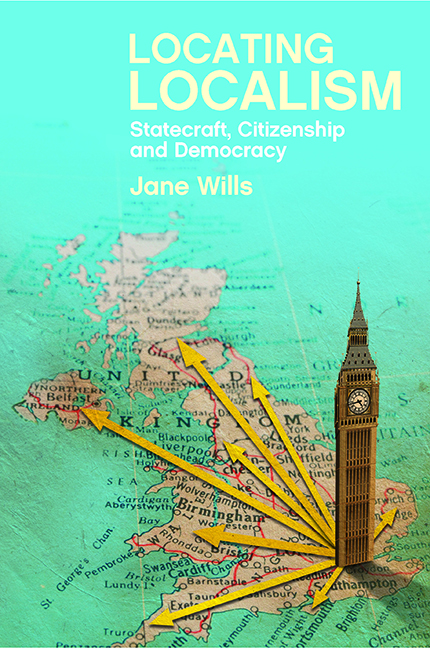Book contents
- Frontmatter
- Dedication
- Contents
- List of figures and tables
- Acknowledgements
- Introduction: the argument being made in this book
- one Making sense of localism
- two The geo-constitution and the long history of localism
- three The place of the people
- four Localist local government
- five Institution building for localist futures
- six Community organising: past, present and future
- seven A localist future?
- Appendix: Research design and methods
- References
- Index
seven - A localist future?
Published online by Cambridge University Press: 05 April 2022
- Frontmatter
- Dedication
- Contents
- List of figures and tables
- Acknowledgements
- Introduction: the argument being made in this book
- one Making sense of localism
- two The geo-constitution and the long history of localism
- three The place of the people
- four Localist local government
- five Institution building for localist futures
- six Community organising: past, present and future
- seven A localist future?
- Appendix: Research design and methods
- References
- Index
Summary
This book has explored localism as a new policy paradigm in relation to the history of government in England while also considering its implications for the political geography of statecraft and citizenship in the 21st century. I have located localism as both an elite and a popular project; it is driven by a healthy, ‘top down’ recognition that the world cannot be run from Westminster and Whitehall and it is providing opportunities for people and organisations to act on the ground. As such, localism is about the political establishment making a new civic offer to its colleagues in ‘lower tiers’ of government as well as to the wider citizenry. It is about the pluralisation of political decision making through greater decentralisation.
In this regard, however, the outcomes of localism depend on a wide range of actors taking up the new opportunities on offer to them. In Chapter One I characterised localism as a form of ‘liberal institutionalism’; it is designed to free up local capacity but, in so doing, it will expose the importance of having the institutions through which people are able to act. While the permissive legislation to support localism is liberal, allowing people to act if they want to – and this is particularly obvious in relation to neighbourhood planning – the existing distribution of civic capacity will shape the ability of people to take up this work. The uneven distribution of people with the skills and interest in localism, as well as the variable strength of local civil society organisations, will shape what happens on the ground. This means that localism is likely to widen existing spatial divides, and those places that need localism the most are the least likely to be able to mount a response. As such, this book has argued that much greater attention needs to be paid to the creation of the civic infrastructure and related capacity that will be necessary to underpin localism. At present, policy is rather ad hoc, but if a sustained localism is to be possible, much more investment will be needed to create the appropriate civic infrastructure that will allow this to happen.
- Type
- Chapter
- Information
- Locating LocalismStatecraft, Citizenship and Democracy, pp. 197 - 208Publisher: Bristol University PressPrint publication year: 2016

